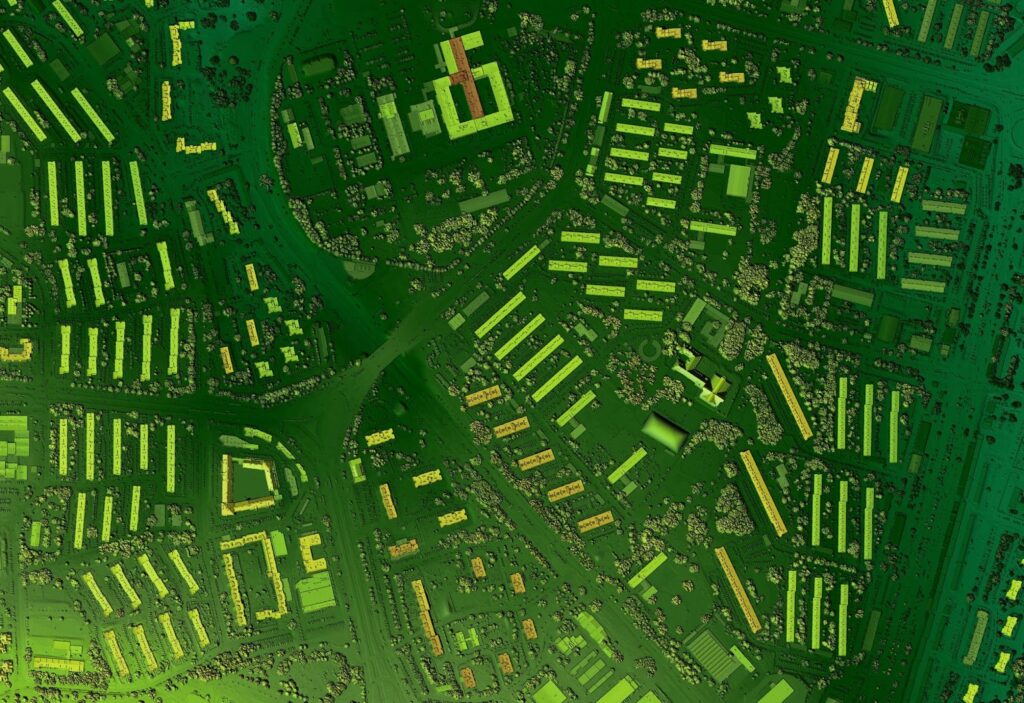Table of contents
Google Earth Engine has become one of the most compelling tools to develop technologies that help combat climate change and promote sustainable development through practices including monitoring the loss of biodiversity. Recently, when NGIS, a leading provider of geospatial solutions, wanted to expand their implementation of Google Earth Engine, they reached out to SADA to establish a strategic partnership designed to implement Earth Engine capabilities on a larger scale.
“This partnership represents a leap forward for geospatial applications,” says SADA Associate CTO Brian Suk. “NGIS is a 2021 Google Cloud Industry Solution Partner of the Year for Sustainability and has an impressive track record of enterprise grade Earth Engine implementations. SADA’s recent recognition as Google Cloud’s Global Sales Partner of the Year and a Gartner® Magic Quadrant™ for Public Cloud IT Transformation Services Niche Player puts us in a position to bolster what NGIS is capable of with our Google Cloud data, infrastructure, and application development capabilities. We’re proud to partner with NGIS and bring our joint value proposition to address the geospatial needs of our customers.”
NGIS: powering next-generation sustainability solutions

Dedicated geospatial and sustainability company NGIS has deployed numerous successful Earth Engine Solutions, including the flagship sustainable sourcing solution TraceMark, which provides end-to-end supply chain tracking from the first mile to the end customer.
Backed by the power of Google Cloud, TraceMark manages large amounts of complex data, empowering companies across industries such as consumer packaged goods, automotive, and mining to gain insights into their environmental impact, including deforestation.
“This partnership brings together two all-in Google Cloud ecosystem partners to scale customer impact using Google’s geospatial technologies. With NGIS specializing in Geospatial and Sustainability solutions and SADA providing deep expertise in enterprise implementation–earning them a 6th consecutive Google Cloud Partner of the Year award–we have the best possible team to support organizations across a range of verticals,” says Bobby Pinter, NGIS General Manager.
Google Earth Engine: a geospatial technology platform to inform climate action
Google Earth Engine provides geospatial data, visualizations and analysis of satellite data, and other advanced geospatial analytics tools to support efforts to predict and monitor environmental disasters, analyze land use patterns, and address complex threats to biodiversity.
As stewards of the world’s greenest cloud, Google built the platform to advance efforts in conservation, biodiversity, and sustainable energy practices. The power of Google Earth Engine is further amplified when integrated into a holistic technology strategy that includes powerful AI/ML tools, advances in data analysis, and productivity & collaboration solutions that optimize the work of teams working remotely in the field and the office.
The changing landscape of mapping the changing landscape

Data scientists, natural resource management experts, and emergency response personnel depend on increasingly sophisticated views of the earth’s surface drawn from satellite imagery, weather data, and aerial photography, among other sources.
In recent years, new geospatial applications have been developed that provide a more complete picture of traffic congestion, vegetation cover, and geographic features drawn from aerial photographs, satellite images, or remote sensing devices.
With this growing deluge of geospatial data types, the ability to spot emerging trends in, for example, resource management has increased, but so too has the need for improved accuracy of data and new data collection protocols.
Concrete outcomes vs. abstract data
Geographic information systems that harness the power of the cloud are set to expand the horizon for what’s possible for businesses that depend on geospatial data collection, geographic data, and truly any phenomena concerned with the earth’s surface.
It’s easy to think of data as abstract. After all, raster data and vector data are all just points and lines represented on a screen.
But take a closer look and such data reveals geographic features of real geographic locations, where real people live and real habitats are under threat. When an earthquake event destabilizes a city or a new infectious disease appears in a region, the characteristics of such data become vitally important to real people’s lives. Acting on that data swiftly is critical for organizations that make it their mission to serve the greater good and respond swiftly to people in need.
Geospatial data over time

But it isn’t just headline-grabbing events that underscore the value of geospatial technology. We can use geospatial applications to provide valuable temporal information, as well.
In recent years, for example, some of the most striking uses of geospatial data for natural resource management have included the monitoring of shrinking water bodies or the migratory patterns of wildlife in specific geographic locations. Data layers that reveal environmental conditions over time help data scientists predict, model, and protect specific geographic locations with greater precision and foresight.
New data types need new data management solutions
As organizations continue to develop innovative new ways to collect information, managing a growing variety of geospatial data types–satellite imagery, remote sensing data, high-resolution aerial photographs, and more–requires new approaches to storing, accessing, and managing data both with algorithms and for field teams equipped with the latest geospatial analysis tools. That’s where SADA’s value comes into play.
SADA services: strategy, scalability, and savings

One of SADA’s primary cloud transformation focus areas is dedicated to Location Intelligence and green cloud solutions, which encompass everything from sustainable supply chains to helping businesses integrate Google Maps into mobile applications.
SADA’s services leverage the company’s deep-bench of change management, cloud architecture, and engineering expertise for companies that design and deploy solutions on Google Cloud, emphasizing accelerating scalability, empowering innovation, and keeping costs low.
With experience in every industry with a presence in the cloud, SADA stands ready to provide strategies, road maps, trainings, implementation, and other resources to make the boldest cloud visions more predictable, less costly, and easier to scale.
Partnering for the earth

This key partnership between SADA and NGIS comes when geospatial data has never been more vital for protecting habitats and human infrastructure. One might even say that the third partner is the Earth itself.
The increasing sophistication of geospatial data practices, which include remote monitoring, IoT, digital twins, mobile apps, and a plethora of map-based solutions, arrives as the use of Artificial Intelligence and Machine Learning appears to be entering a golden age.
Artificial intelligence meets geographic information
The ability of AI/ML to recognize changes in geographical features by analyzing satellite imagery over time and to generate actionable insights based on those patterns, means that we stand on the cusp of a whole range of innovations that leverage planetary intelligence to ensure that the earth remains vibrant and viable for sustaining life.
The future of the earth lies in the cloud
Combining the capabilities of Google Earth Engine and Google Cloud with the innovation mindset of NGIS and the outcomes-based expertise of SADA represents a hopeful vision for our collective future. For more insights, be sure to watch SADA Associate CTO Brian Suk’s presentation, Insights on climate sustainability: how data and AI are powering a greener future and the SADA expert group discussion, AI for a greener future: tackling climate change with artificial intelligence. For more information on how your business can take advantage of the latest developments in geospatial data and sustainability practices, feel free to reach out and schedule a discovery call with SADA’s Location Intelligence experts.



